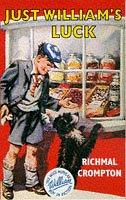'They planted hatred in our hearts.'

Footnotes In Gaza
by Joe Sacco
Before my recent forays into graphic fiction I had been a keen reader of graphic non-fiction. Joe Sacco is the pioneer of war-reportage comics and his work in Palestine and Safe Area Gorazde
provide an accessible format for an overview of the history in those troubled regions as well as providing the immediacy of personal testimony. Sacco's own persona in those accounts was that of bemused foreigner, his reflective glasses adding to the blankness of his expression. By his own admission it would have been disingenuous to maintain that persona after becoming a much more seasoned traveller and interviewer and so his latest book, which sees him return to Palestine, is a far more sombre affair; purposeful, powerful and important.
The comic format makes it very easy for Sacco to give potted histories, or allow his witnesses testimony to provide the voice over for his pictures. For me as someone whose knowledge of the regions political history is less than sketchy these refreshers are incredibly useful. To learn that the creation of the Fedayeen (one of those words that I hear in coverage, gather means something along the lines of freedom fighters, and think little more about) came in response to a single act is a shock. To learn how implicated nations like Britain, France and America are in events is not. From the Suez crisis onwards there are many nations with vested interests and blood on their hands. There is a beautiful fluidity to the manner in which Sacco leads from one witness to the next or dips back into the archive to provide detail or reference material for what is being said. He has become more artistically adventurous too, particularly in developing full pages made up of many facets, some pages becoming consumed by the fire and brimstone of conflict.

Quite often he takes a face-on perspective, especially when it comes to interviews but there several places where he allows the perspective to rise above the streets of Rafa for example or to drop down to where the bodies begin to pile up as the women of the town make maltamah (a demonstrative form of grief).

It is in the depiction of the incident in Rafa that Sacco really excels. By conducting his interviews and gathering his evidence fifty years after the event he knows that he is fighting a battle against fading memory and the small differences in remembered detail become compelling and in many ways the proof of what really occurred. Sacco's frustration at not finding a consistent version of events leads him to understand, in the final frames of the book, why such a watertight version would be impossible. However it is fair to say that in providing what could be seen as a one-sided perspective on events, and an incomplete one at that, this isn't going to succeed as a full stop on what happened. By capturing that oral history in print it can only be hoped that what is does make possible is for further generations to ask what, why and how this was allowed to happen.






0 comments:
Post a Comment